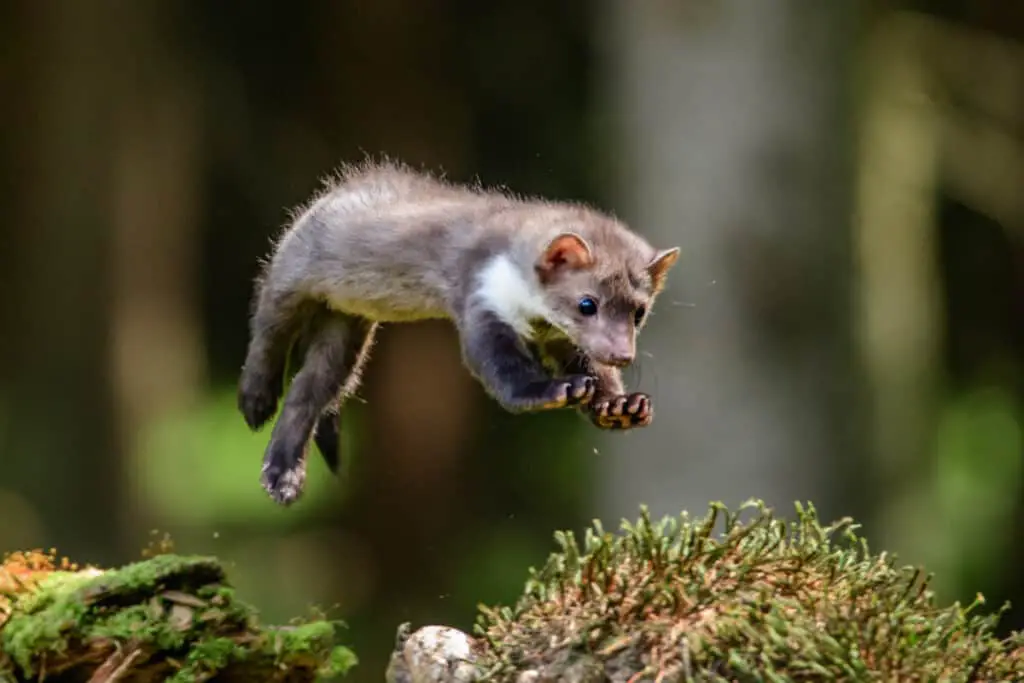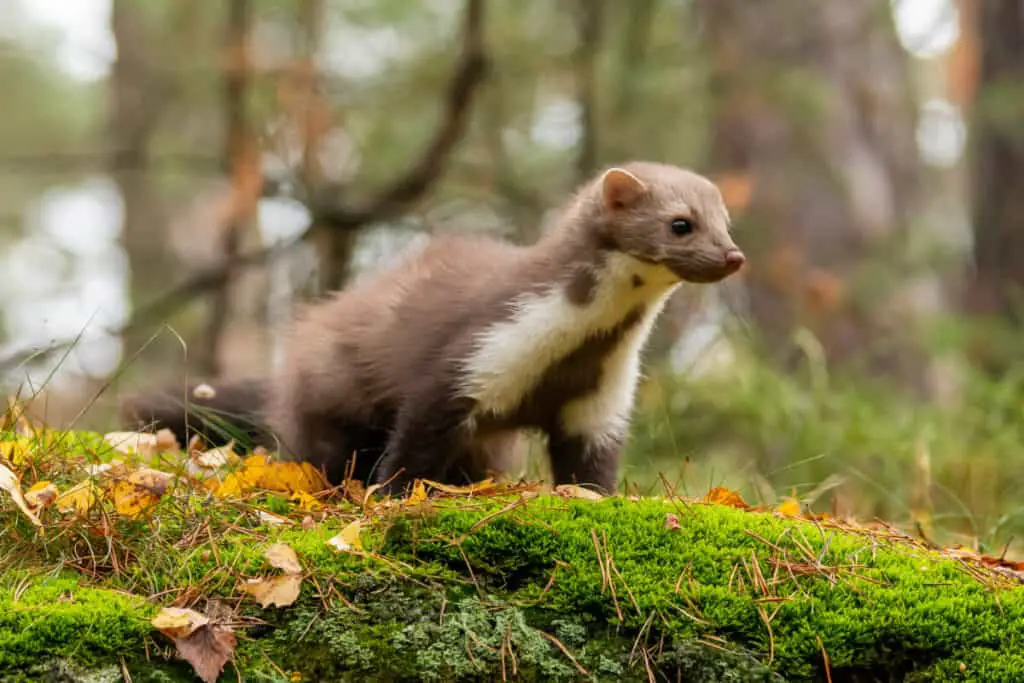Martens, members of the Mustelidae family, are solitary, omnivorous mammals found throughout North America and Eurasia. They have adapted to a wide variety of habitats, allowing them to survive in both urban and wild areas. As such, they consume an equally diverse range of foods.
The diet of martens varies by region due to the differences in availability of food resources depending on geographic location and seasonality. In general, their diets consist mainly of small animals including voles, mice, squirrels and other rodents as well as insects like beetles or moths.
Fruit may also be consumed when available as well as nuts and berries during autumn months. Additionally, carrion can sometimes form part of their diet if other prey is scarce.

Small Animals
Nature is a complex organism, ever-evolving to adapt and survive. The European pine marten, or Martes martes, is no exception; it has proven to be an adaptive creature with unique dietary preferences.
This medium-sized mammal of the Mustelidae family is native to Northern Europe and can feed on a variety of small animals such as voles, mice and shrews.
It will also take advantage of birds’ eggs when available during springtime and supplement its diet with fruits in autumn months including cherries, apples and plums.
In addition to these dietary staples, they have been known to consume reptiles like lizards or snakes as well as amphibians like frogs.
They are even opportunistic enough to scavenge food left by humans such as carrion or discarded scraps from campsites.
Life of a Marten: Unveiling Their Lifecycle
Insects
Martens are omnivorous animals, meaning they eat both plants and animals. Insects make up a large part of the marten diet, including beetles, crickets, grasshoppers, cicadas, moths and flies. Due to their dietary adaptations they can consume more than two hundred species of insects:
- Small spiders
- Earthworms
- Centipedes
In addition to insects, martens are known for consuming small mammals such as mice, voles, squirrels and rabbits. They also enjoy eating fruits and vegetables but only if these foods are close by in terms of availability.
In order to survive during harsh winter months when food is scarce martens will often resort to scavenging around human settlements looking for any available sustenance.
Martens have evolved mating habits that coincide with seasonal changes in their diet; usually beginning courtship rituals once spring has arrived and the abundance of food sources increases significantly. This allows them to ensure an adequate amount of nutrition for themselves and their young before mating season begins and throughout the summer months until autumn arrives again.
Unraveling Martens: Understanding Their Behavior
Fruit
Martens are omnivorous animals, feeding on a variety of food sources. Insects make up a large part of their diet and they will forage for small invertebrates such as beetles, caterpillars, grasshoppers and crickets. They also consume seeds from trees and shrubs, helping disperse certain species in the local ecosystem.
In addition to seed consumption, marten diets often include fruit. Foraging is an important activity for these mammals during late summer months when fruits become readily available. Berries, cherries, plums, apples and other wild fruits provide them with necessary carbohydrates for energy storage during winter hibernation periods.
Martens may eat some flowers too; however this dietary habit is not common among all populations. As temperatures drop over autumn months so does their reliance on fruit as it becomes more difficult to locate amongst leaf litter or buried under snowfall.
How Big Are Martens: Exploring the Size of Agile Mustelids
Nuts And Berries
Martens are omnivores and their diet consists of a wide variety of items. They primarily feed on small mammals, birds, insects, fish, eggs, nuts, fruits, berries, fungi and tree sap. In particular they enjoy consuming flower petals during the summer months when other food sources become scarce.
Their ability to adapt to different conditions enables them to use various strategies in obtaining food; martens may hunt for prey or scavenge for carrion. Additionally they have been observed raiding garden plots in search of fruit or vegetables as well as tapping trees with their sharp claws to access the sweet tree sap inside.
Below is a list of some common dietary elements found within a marten’s menu:
- Small Mammals
- Berries & Nuts
- Insects & Fish
- Fungi & Tree Sap
The occurrence of certain species depending upon its habitat allows for an even greater range of potential meals including amphibians, reptiles and small invertebrates such as worms and snails.
Martens can also be seen rummaging through garbage cans looking for scraps from human consumption providing evidence that these animals will eat almost anything edible if given the opportunity.
Martens Revealed: Exploring Their Unique Characteristics

Carrion
Martens are omnivorous predators, foraging on an array of prey items including small mammals, birds, amphibians and insects. They also consume a variety of plant material such as berries and fungi.
Carrion is another food source utilized by martens, and their ability to scavenge can provide them with additional nutrition during times when other sources may be scarce.
Foraging behavior in martens is largely dependent upon the availability of food resources within their range, but they have been observed to search out specific types of prey depending on the season or habitat type. For instance, they will primarily hunt voles while active in snow-covered areas due to their heightened ability to locate burrowing animals under the snow.
Marten predation also plays an important role in predator-prey dynamics; studies suggest that variations in density among their primary prey species often influences their abundance across different habitats.
Unveiling Marten’s Senses: A Fascinating Journey
Conclusion
Martens are omnivorous mammals that have adapted to a wide range of food sources. They primarily consume small animals such as mice, birds, and fish; however they also feed on insects, fruit, nuts & berries and carrion.
By taking advantage of these various dietary options martens can survive in many different habitats even when resources become scarce. This versatility makes them an important part of the ecosystem by controlling pest populations while contributing to food webs with their own presence.
With ongoing conservation efforts we may be able to ensure this species continues its vital role in nature for years to come.
